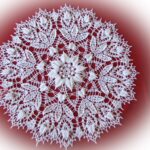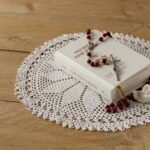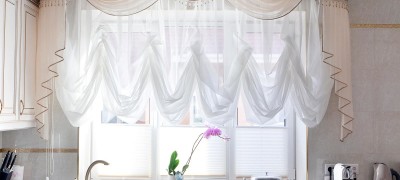How to crochet a napkin
Do not think that knitted napkins are no longer fashionable - they are sold in many modern decor stores. Such an original product can be used to decorate a coffee or dining table, or presented as a presentation. The simplest techniques will help to knit a napkin without difficulty, even for novice needlewomen. And for more experienced craftswomen, there are interesting techniques and beautiful patterns here.

Description and types of napkins
Crocheted napkins will harmoniously complement any interior and bring their own flavor. They will look original as a decor if the room is decorated in a classic style, baroque, provence or boho, in which naturalness, luxury and many interior details are appreciated. But you can combine it with others. For example, sconces and floor lamps perfectly complement art deco, so a knitted napkin will be very useful. Napkins come in different shapes, sizes and colors, but there are several main types:
- Openwork.
- Volumetric.
- With motives.

They can also be classified by shape. The most common are round, square, oval and rectangular.
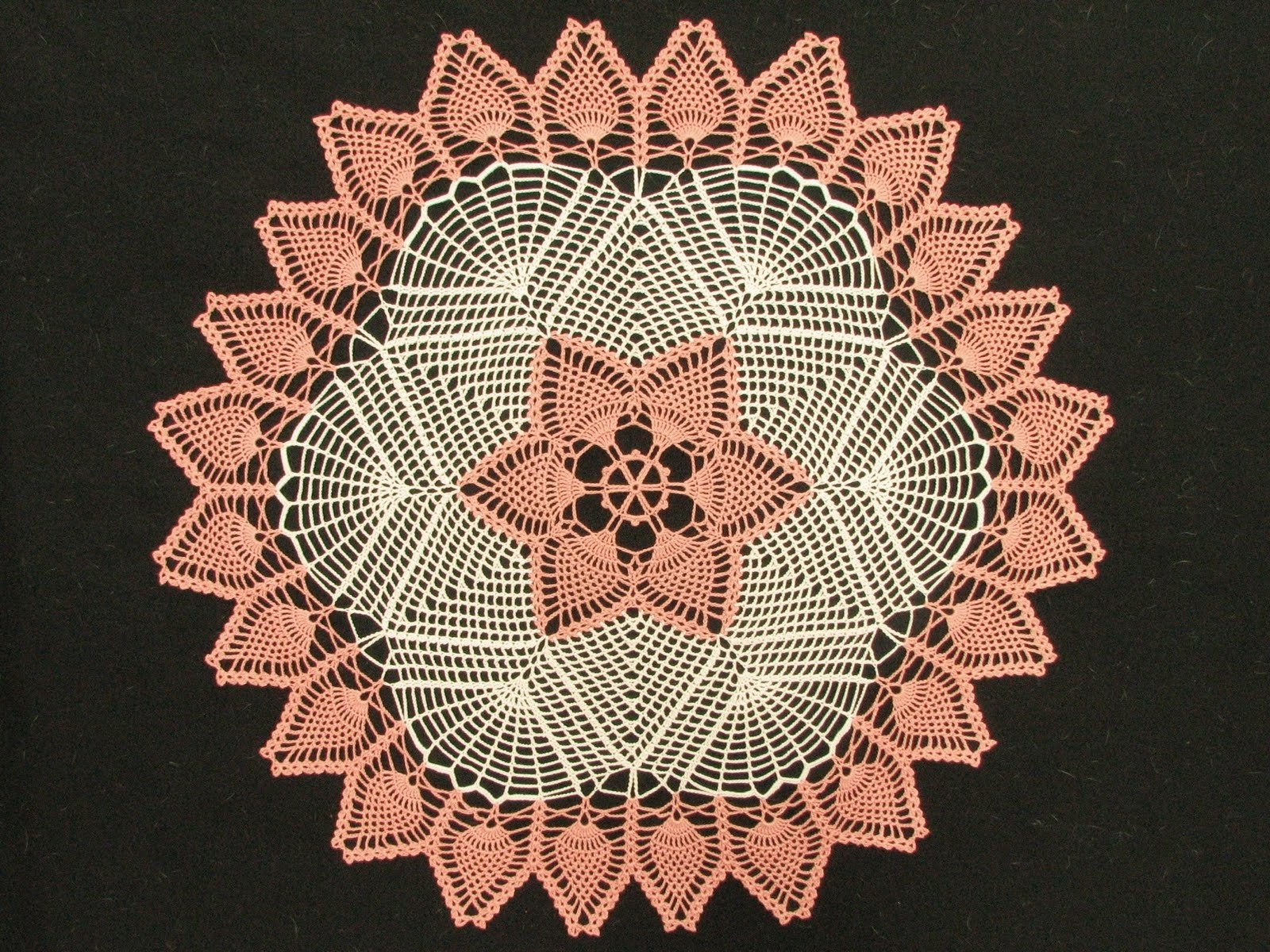
How to choose a crochet hook
Before starting work, beginners should familiarize themselves with the terminology and learn the loops. You should also learn to read the diagrams. They vary in complexity, but it's worth starting with light patterns. In addition, it is necessary with threads and the size of the tool - the result and speed of work depends on this. Hooks are made from different materials:
- Wooden ones are more often used for thick yarn, so they are not suitable for napkins.
- Plastic hooks are lightweight and flexible, but they often break.
- Metal tools are the most reliable and durable.

They also vary in size. The hook is selected depending on the yarn that will be used for the product.
- For regular yarn or iris, use a 0.5 mm crochet hook.
- For thin - 0.6-1.75 mm.
- For medium, 2-3.5 mm is suitable.

Hooks larger than 4 mm are used for thick woolen and twisted threads - this is important when knitting clothes or blankets. For napkins, cotton, microfiber or iris are more often chosen.
Important! The thinner the hook is used, the tighter the knit will be.
How to crochet a napkin yourself
Crocheting napkins involves two methods: thin and circular. In the first case, knitting is carried out with direct movement in the first place, and then back with a turn and the allocation of awnings. With a circular seam, there is no seam, so the threads are tied. These techniques allow you to knit any napkins, so we will consider in more detail the description of each type of product.
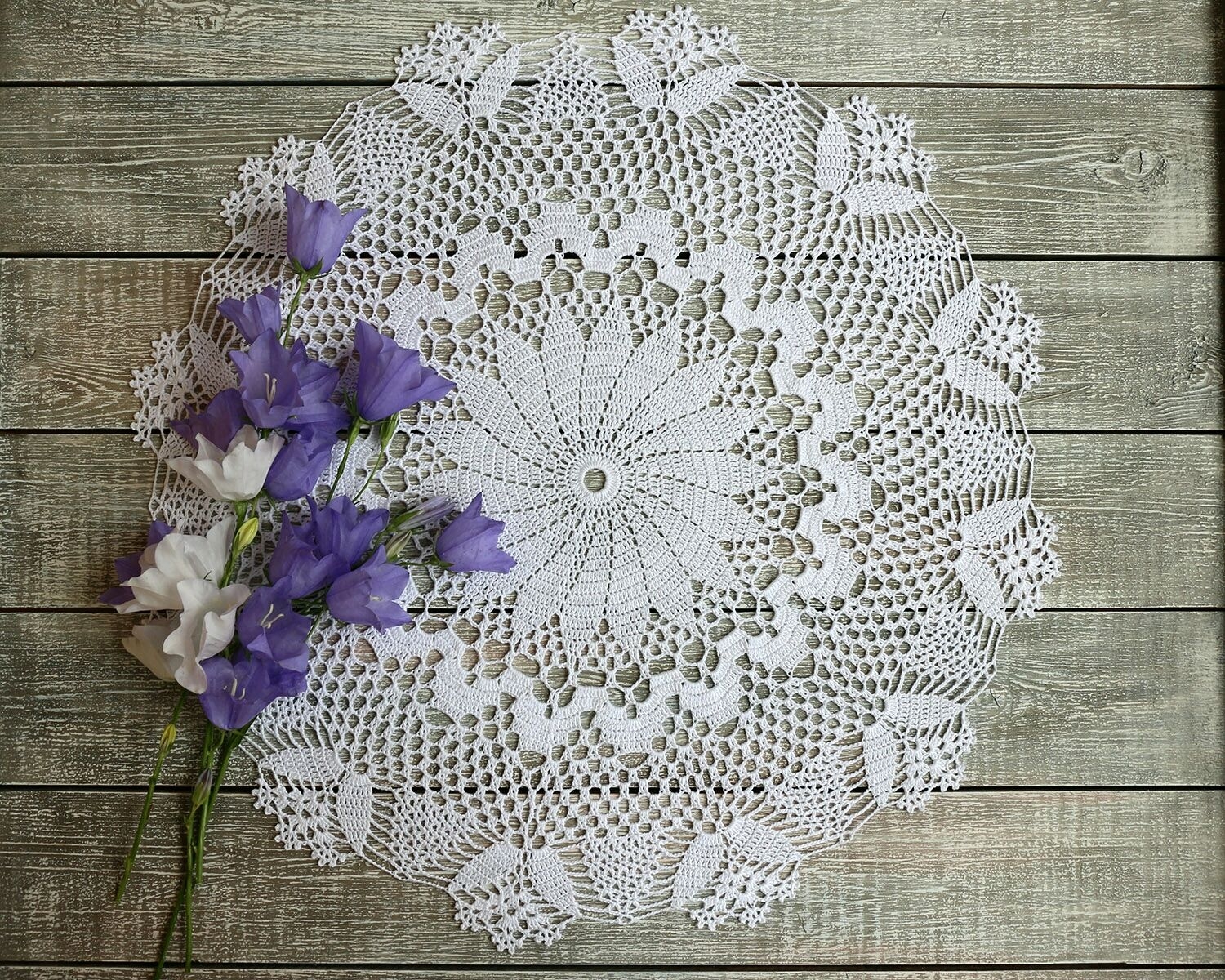
Simple circuit
This technique will be good practice for beginners, and the product itself will turn out to be no less attractive than using complex schemes. First you need to learn how to knit several types of loops:
- Air. It is designated as VP, and on the diagram - by a dot or a circle.
- Column without crochet. Used to create a drawing. Abbreviated as RLS, straight line, or plus.
- Column with a crochet (C1H, C2H and so on, indicating the number). Indicated by a crossed out line.
- Connecting column (or half-column PS). It is used to close a row and is indicated by a semicircle or a dash.

Now you can start working directly. To do this, you need to dial 10 VP and round off. Then they knit like this:
- They make a yarn over and knit the first column. There are three loops on the hook, so you need to stretch the thread through two so that there are only 2 loops left on the hook.
- In a similar way, the second C1H is knitted, after which three loops are formed on the hook.
- After knitting 3 stitches, there will be 4 loops on the hook.
- To form the top, a thread is pulled through all four.

This is how the remaining columns are knitted. The finished napkin is washed and ironed.

Oval
Knitting traditionally begins with a circle, and then several methods of forming an oval are possible. The circle is either complemented with elements, or lengthens the main drawing. It is pulled out by means of additives.
- Dial 45 VP, RLS in the tenth, 5 VP and RLS in the sixth.
- Knit a joint venture at the end of the first row, after which in each arch of the RLS, half-column, 3 С1Н, half-column, RLS, knitting 2 VP after each.
- Form a circle of eight VP, tie the top. At the end, dial 4 VP and C3H in the VP of the first row.
- Tie an arch of six VP.
- In the next two, an arch and a picot from 3 VP are knitted.
- 5 VP are tied, alternating with RLS in the middle of the arches.
- 5 С1Н are woven into each arch, dividing their VP.
- Now four rows of VP should form arches.
- In conclusion, one p is knitted. С1Н, separated by VP.

You can decorate the edges in various ways, including arches. They are knitted in the last row: 3 VP, 3 C1H, pico from 5 VP and 3 VP.

Round
It is quite simple, and the design of such a product is distinguished by its sophistication and beauty. They knit it as follows: dial 8 loops and round off. Each row begins with a VP, and ends with a half-column. They are built like this:
- Two pillars. s / n, 2 VP are repeated eight times.
- In each column of s / n of the previous one, 2 columns of s / n are knitted, and 2 air. loops repeating the motif.
- Two pillars. s / n in one loop, 1 tbsp. s / n the next two loops, 2 columns s / n in one, 2 air. loops. The motive is repeated until the end. Each time it is knitted two more loops.
- Two pillars. with nak., 1 tbsp. with nak. (in every four loops), 2 tbsp. with nak., 2 air. loops.
- Two pillars. with nak., 1 tbsp. with nak. (at six), 2 tbsp. with nak., 2 air. loops.
- Two pillars. with nak., 1 tbsp. with nak. (at eight), 2 tbsp. with nak., 2 air. loops.
- Two pillars. with nak., 1 tbsp. with nak. (at 10), 2 st-ka with nak., 2 air. loops.

From the eighth knit according to any chosen pattern, using the motif you like.

Square
Crochet square napkins with patterns are simple and beautiful, and knitting takes very little time. To begin with, dial air loops and round off.
- In the first row, dial 4 air. loops, 1 double crochet, and again 1 air. loop. Repeat the sequence and finish with a blind loop.
- Third: dial 3 air. loops, knit 2 С1Н. Then 3 air. loops and 3 С1Н, which are knitted around the air loop of the previous p. Continue to the end of the row, and at the end of 1 C1H, tied up an air loop.
- At 4 a square will form. To do this, dial 7 air. loops, and then knit 3 C2H. Now they are typing a motive that will be repeated all the way: 3 tbsp. s / n, 5 sc, 3 st. s / n, 3 С2Н, 3 air. loops, 3 tbsp. s / n. Finish: 3 tbsp. s / n, 5 sc, 5 st. s / n, blind loop.
- Fifth: 3 air. loops are recruited in order to form a lift. Then a corner is formed and knitted to the end: 3 tbsp. with nak., 3 air, 3 tbsp. with nak., 6 tbsp. with nak., 5 air. loops, 1 tbsp. with nak., 5 air. loops, 6 tbsp. with nak. Finish 5 tbsp. with nak. and a dead loop.
- Sixth: knits according to the fifth pattern.

In order to move to the next square, you need to dial not 3, but one air loop at the last corner, and knit the next one through the corner, dial 1 VP and further according to the given scheme.

A square napkin can be knitted in one piece, finishing after the sixth row, and then connecting the elements.
Additional Information. According to the above scheme, you can knit not only napkins, but also tablecloths, rugs or blankets.

Festive
A festive napkin can be knitted using various patterns, but it turns out in a very peculiar way with multi-colored weaving. This is a rather complicated technique, but the result is worth it. To begin with, use white threads. A chain of 14 air loops is knitted and closed with a half-column. Further, according to this scheme:
- First p .: three VP and 27 C1H are knitted into a ring.
- Second: Recruit 4 VP. Then under each loop of the first row C1H, 1 VP. They finish with С1Н. You should get 13 st-v. At the end of the row 3 air. loops.
- Now knit in the same pattern 2 rows of red thread. To do this, 14 VP are recruited and this chain is introduced under the white circle. The ring is closed with a half-column. The last red loop is connected to the first loop of the 2nd row of the white circle with a half-column.
- Third: above each air. a loop of the last row of a white circle is knitted with C1H, and between them - 1 air. loop, picot from 3 air. loops, 1 air. a loop. Then again to the white ring, connect it with the red one and knit in the same way.

Important! The last white loop should connect to the red one, and the red ring to the white one.

At the end, you should get 25 patterns. They are connected together with a needle and thread.

Volumetric
The technique of crocheting volumetric napkins is that they are complemented by various elements. So, an ordinary napkin of any shape can be decorated with flowers or fruits. Or tie with fluttering butterflies. They can be made in this way: they knit 6 VP and round off. Then the rows go like this:
- 3 С1Н and 3 VP between them, knit only 8 times.
- In each arch, located in the first row, they knit twice 5 С1Н, inserting 5 VP each.
- RLS is knitted between adjacent columns of the previous row. The arch is made like this: 7 С1Н, 2 VP, 7 С1Н.
- The entire row is performed with single crochet.
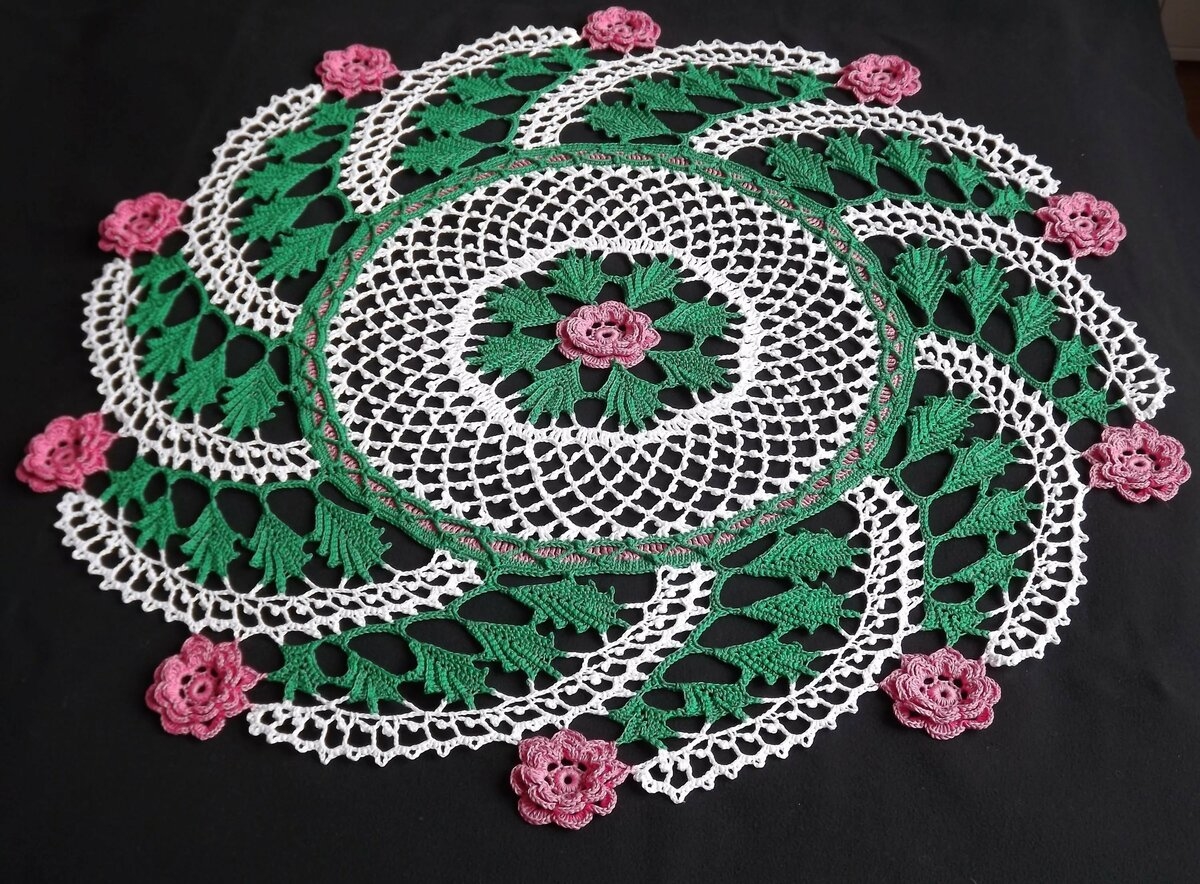
At the end of all the work, a small neat flower is obtained. The ego is folded in half and forms a butterfly.
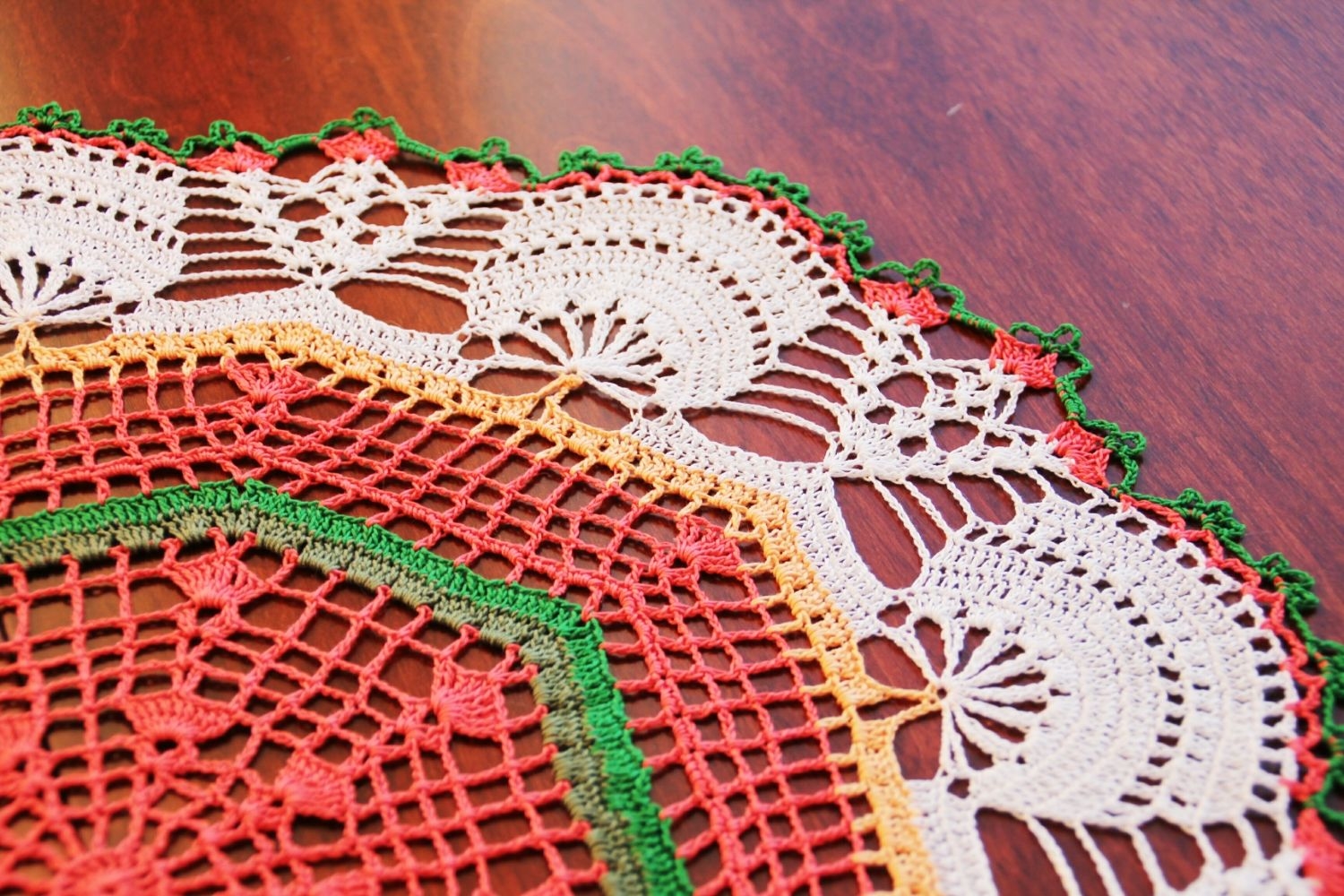
Additional Information. In order to make the butterfly bright, you can use threads of different colors.
Other knitting techniques
There are other techniques, for example, sirloin knitting is considered quite popular. With this method, a grid is obtained where filled and empty cells alternate. Moreover, each cell consists of two air loops and a double crochet. They do it like this:
- Air loops are recruited.
- Knit 3 loops on the rise.
- For the cell, you need to dial 2 air loops.
- This is followed by a double crochet.
- In the process of work, 2 VP and S1N alternate.
To start the next row, knit 3 lifting loops, 2 cell loops and C1H.
Any of the proposed methods is quite simple, but it allows you to create original things with your own hands that will decorate the interior. Novice needlewomen should learn to read diagrams and always have a sample of the product in front of their eyes.
Knitting complex patterns is best done in fragments, which are then connected. This way, mistakes can be minimized and handicraft can be enjoyed.
Video: crochet napkin knitting options



















